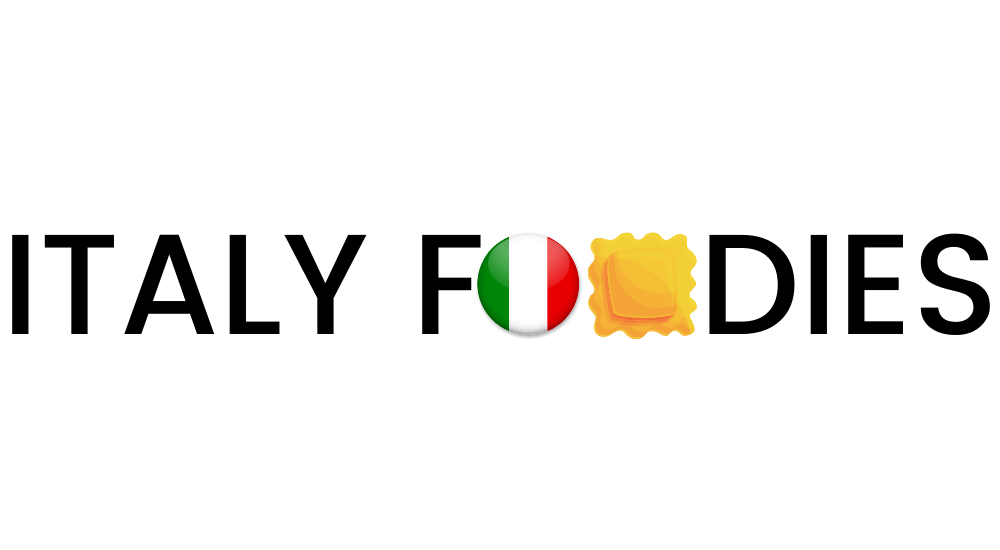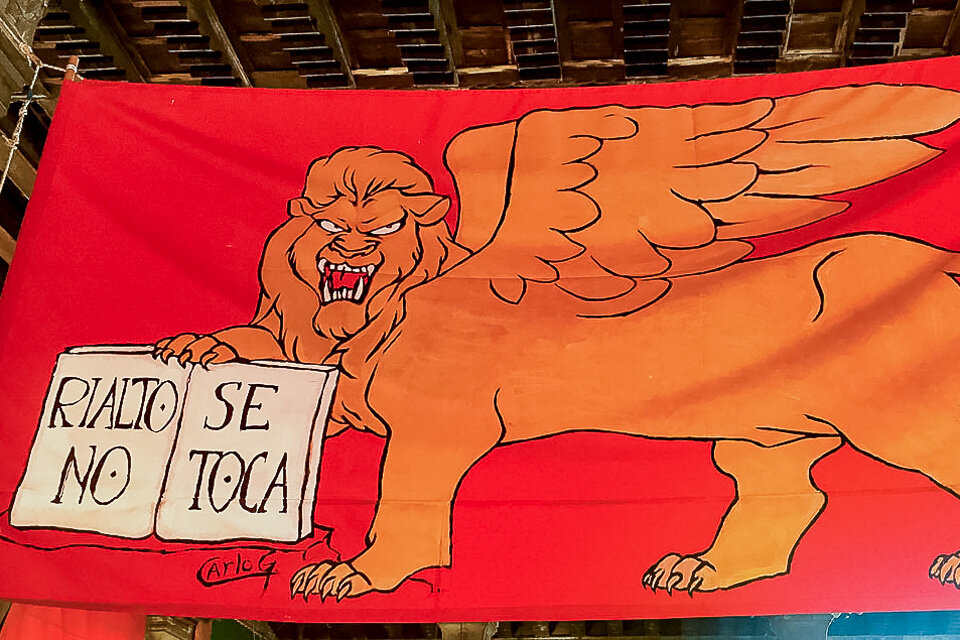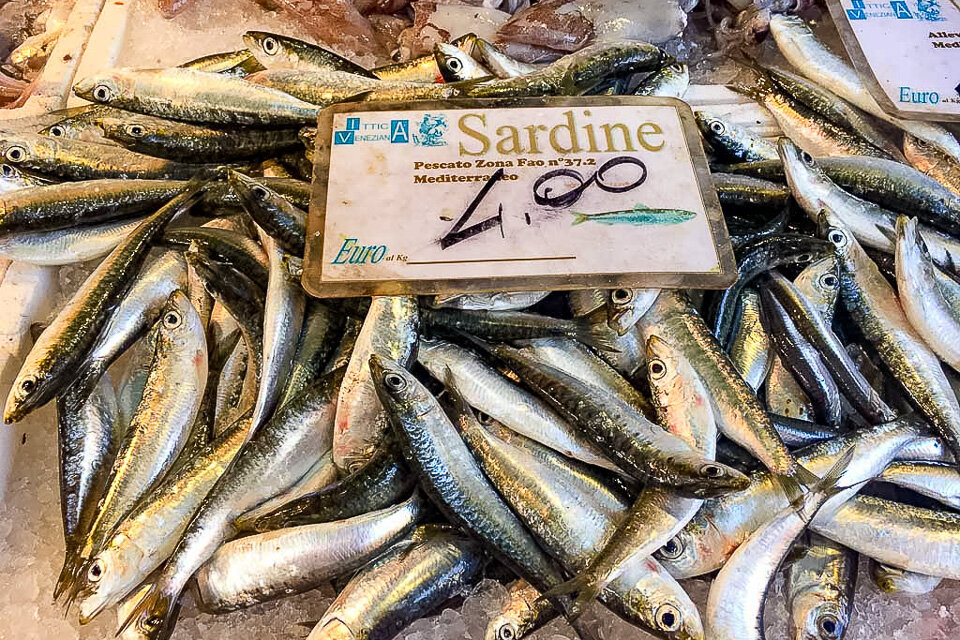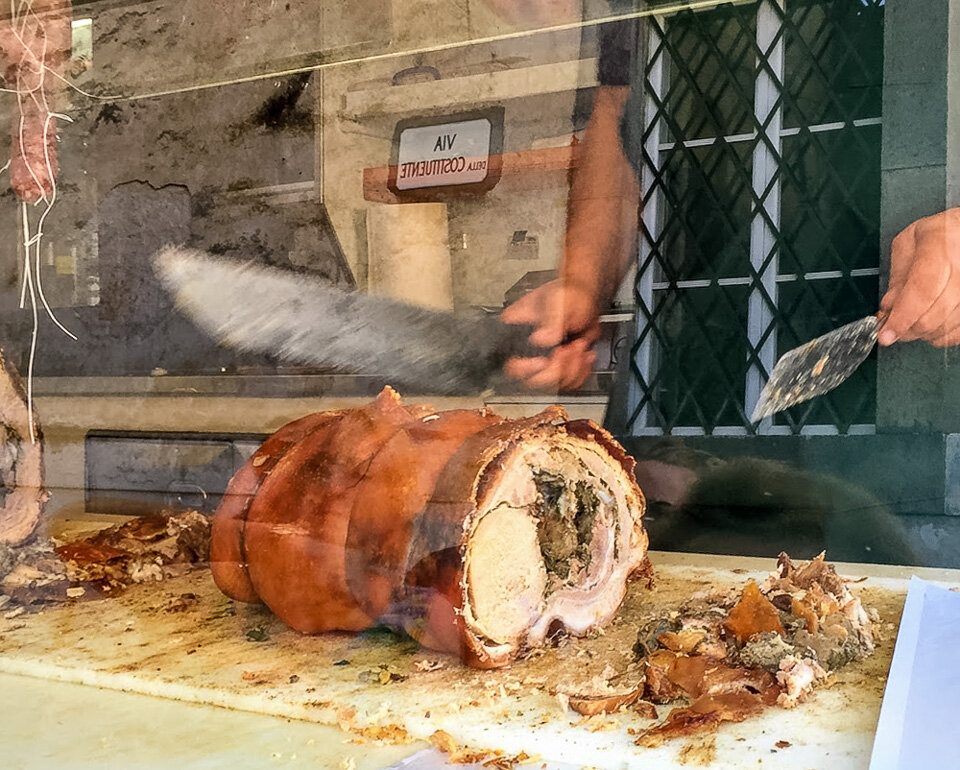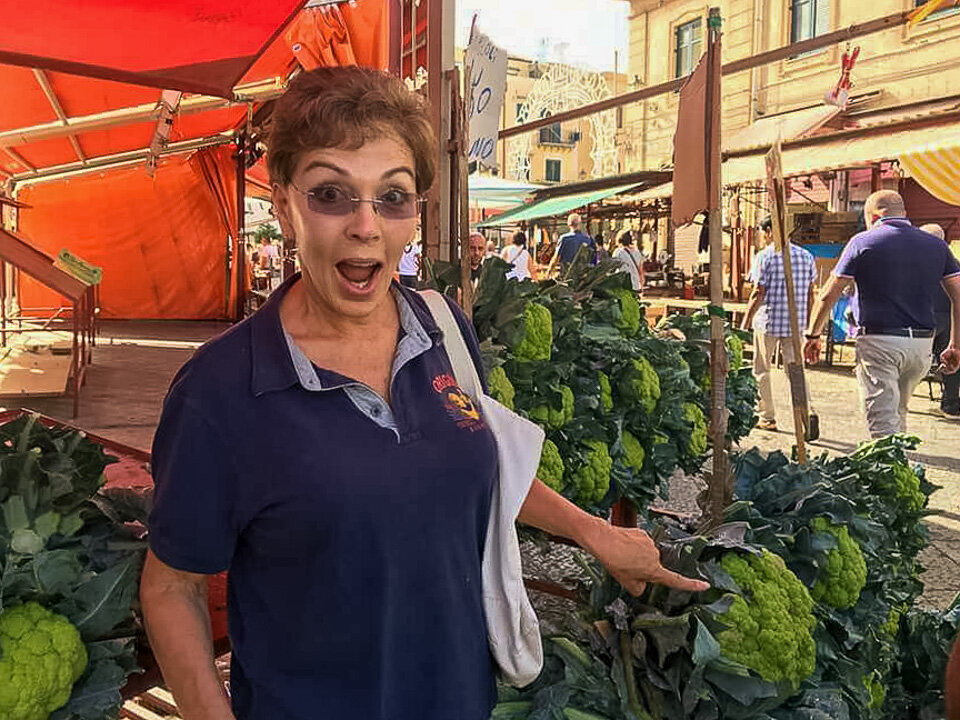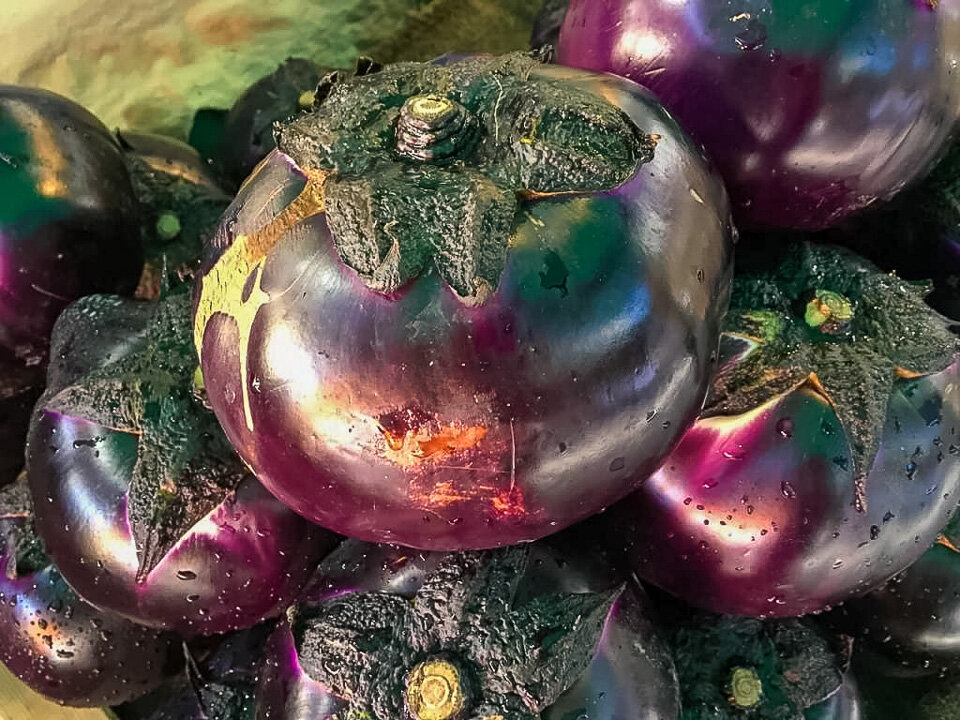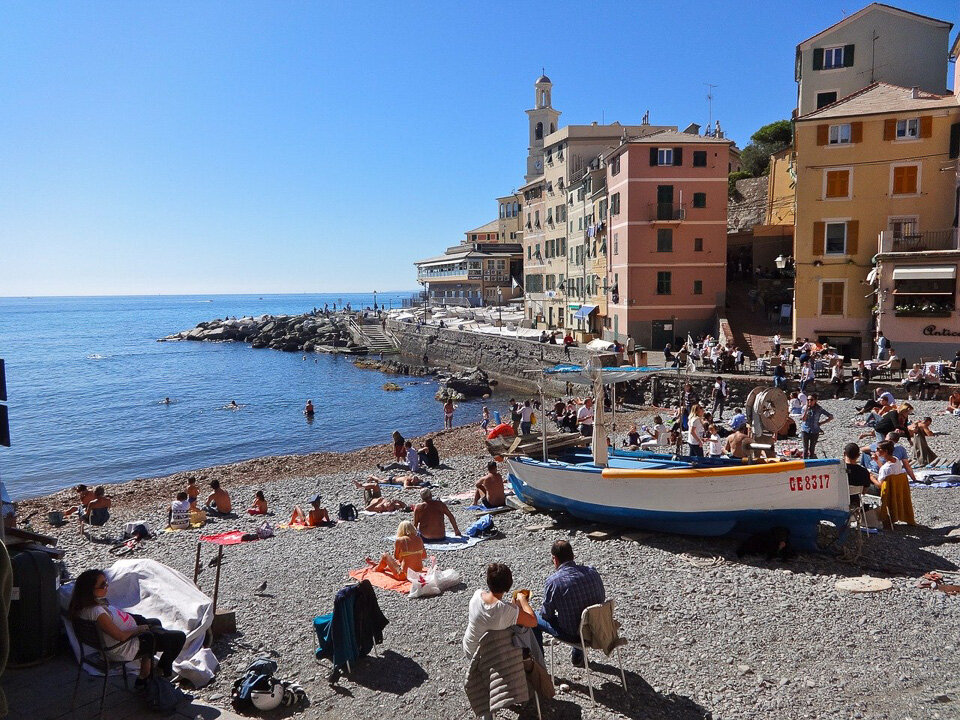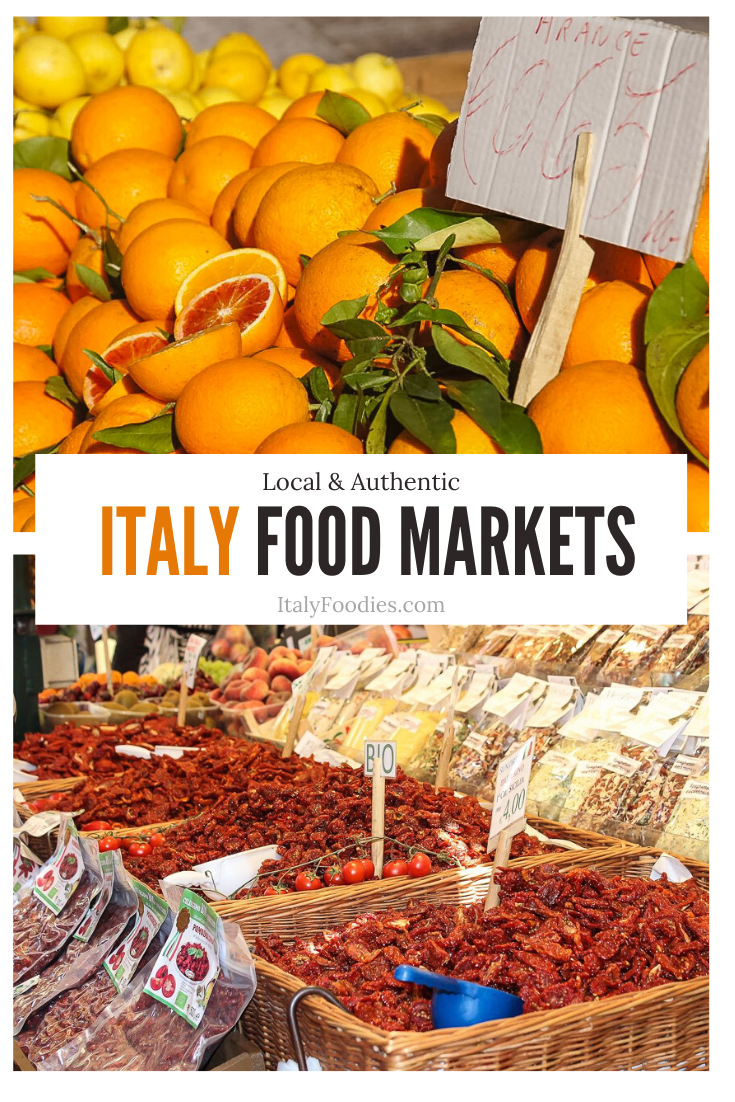15 Authentic Italy Food Markets You Absolutely Have to Visit
Italy is one of the world’s great food cultures which goes well beyond just slurping a tempting plate of pasta and tasting amazing Italian wine.
Food is an essential part of Italian life, and perhaps nowhere is that more evident than in the local Italy food markets.
Markets in Italy are the beating heart of Italian food culture and community, where locals shop for what’s fresh and to eye up the competition, better known as seeing what ingredients their neighbors are using in their dishes.
It’s where friends gather over an espresso and pastry in the middle of the day.
And it’s one of the best ways for visitors to savor the typical food of Italy.
Italy Food Markets
If you can’t find a traditional food at the local market, it’s probably not fresh, seasonal, or authentic to begin with. And Italians adhere to a seasonal calendar — that’s a big reason the food in Italy is so delicious.
Tomatoes taste like tomatoes and cheese has as much fat as the cow or sheep allows. Generally speaking, food from a fresh market is whole and real.
If you love to travel slowly like we do, visiting the local market wherever you go is probably at the top of your list? Am I right?
We honestly can’t think of a better way to slow travel a place than by combining the most significant elements of a culture: local people, eating and selling authentic local foods, in a vibrant place of community.
Fresh sun-dried tomatoes in Naples
If food is driving your plans to visit Italy soon to check out the local ingredients that go into those famous Italian dishes, don’t miss these food markets in Italy.
Whether you want to eat like a local in Rome or Florence, cook like a Nonna in Napoli, buy the freshest catch in Venice or Catania, or eat semolina bread at the source, these markets are worth the trip!
Emilia Romagna Food Markets
The Quadrilatero, Bologna
by Lori Sorrentino, Italy Foodies
Arguably one of the best food cities in Italy, Bologna is one of our favorite cities for that very reason. You’ll eat your way around for a week straight before you come up for air and realize your pants are beginning to stretch at the seams!
Food in Bologna is rich and fatty in the very best way.
When you arrive, head straight for the oldest market in Bologna, the Quadrilatero. It’s the part of Bologna that once housed the great craft guilds of centuries past — painters, furriers, goldsmiths, barbers and butchers, fish mongers and meat processors known as Salaroli all have their roots here.
Today, remnants of this medieval structure can still be seen. Stroll the narrow streets of the Quadrilatero and buy yourself a picnic full of local food.
Fresh baked Italian breads, cured meats, fresh seafood, pastries, pasta dishes… it can all be purchased and eaten here or taken home.
There are so many good restaurants, wine enotecas, and even breweries lining the streets, so refreshment is never far away. Shop a little, stop and have a bite, then shop some more.
This is life in Bologna. Can you think of a better way to experience Italy?
Mercato Albinelli, Modena
by Angelo Sorrentino, Travlinmad
At the heart of Italian cuisine are food items that are fresh and locally sourced. Not many markets personify that ideal as well as the Mercato Albinelli in Modena. If it’s grown or produced locally, it’s here.
The stalls that line the aisles show off bright and colorful fresh fruits and veggies.
There are butchers selling locally produced meats, the aroma of fresh-baked breads and pastries filling the air, and the freshly made pastas for which Emilia Romagna is known.
Fresh seafood brought in daily from the coast is the only Modena food at the market that may not be local, until you consider that the coast is just an hour away.
Cheese lovers should stop at La Baita to sample locally produced cheeses like fresh ricotta montanara and that famous Emilia Romagna delicacy, parmigiano reggiano cheese. They’ll wrap your wedge for the trip home.
Olives, olive oil, wine, and small delights are also found throughout the market.
The market is just a short walk from the Piazza Grande and is open from 6:30am until 2:30pm, Monday to Saturday. Make time to visit the Albinelli market or visit it on your Modena food tour.
Buying local foods at Mercato Albinelli in Modena
Venice Markets
Rialto Market, Venice
by Katy Clarke, Untold Italy
Just steps from the famous bridge that shares its name, the Mercato di Rialto is the central produce market in Venice. The Rialto Market is one of the longest running markets in the world.
Records dating as far back as 1097 show that a market existed on the same site for centuries.
There are two parts to the market to discover — an undercover Pescheria or fish market and an open air produce market known as the Erberia.
Given the city’s position on the lagoon, the fish market is a treasure trove of bounty from the sea. You’ll find all manner of stalls selling everything from whole octopus and scallops to huge skate and mountains of anchovies.
The fruit and vegetable stalls are just as interesting. Here you will find seasonal produce at its best.
So when is the best time to visit? That depends on what you’re hungry for. Mounds of artichokes are piled high in April, while October is the best month for mushrooms.
Arrive at dawn to see crates of fish, fruit and vegetables unloaded from barges on the Grand Canal. There may be bigger markets in Italy but thanks to its unique position, the Rialto market is surely the most fascinating.
The fish market is open Tuesday to Saturday from 7:30 am to 12 pm while the Erberia is open Monday to Saturday from 7:30 am to 12 pm.
The fish market is open Tuesday to Saturday from 7:30 am to 12 pm while the Erberia is open Monday to Saturday from 7:30 am to 12 pm.
Find more Venice markets, local Venetian food, and cichetti bars!
Campania Food Markets
Mercato Pignasecca, Naples
By Emily Lush, Wander-Lush
Located in the heart of historic Montesanto neighbourhood, La Pignasecca is one of the oldest marketplaces in Naples. Prior to the year 1,500, the area where the market now sits was devoted to vegetable plots.
The name La Pignasecca — literally ‘the dried pine’ — is a reference to the last tree that stood in the garden before it was redeveloped into housing.
Today, Mercato Pignasecca is once again responsible for feeding Naples, but this time the clientele also includes many tourists and foodies on the Amalfi Coast. Several city blocks are completely consumed by its maze of fruit shops, delicatessens, tripperias and pasticcerias.
Fresh-caught seafood and hand-rolled pasta are popular offerings, and of course you can find Naples’ famous sfogliatelle — the traditional Italian pastryom/blog/traditional-italian-desserts-in-italy made famous in Naples is one of Italy’s perfect mid-morning market snacks.
Like all the best markets in Italy, La Pignasecca is a feast for the senses. You can learn an awful lot about local cuisine and Campania food culture just by walking around and observing the market rituals.
Apart from the bountiful produce and tempting sweets, also take note of the hand-painted signage and special quirks that make each family-owned store within the market unique. Some of these shops have been operating for generations.
La Pignasecca is open seven days a week from 8am until the early evening. It’s most lively on Sundays and in the early mornings when locals do their shopping.
A food market in Naples
Want to savor more sweet Italian pastries and desserts? Read our Guide on traditional Italian desserts before you go!
Umbria Food Markets
Piazza del Popolo, Orvieto
by Irene S. Levine, More Time to Travel
Unless you live in Orvieto, it takes some effort to visit the Piazza del Popolo market. That’s because the entire city sits atop a plateau of volcanic ash stone (called a tufa) — some 1,000 feet above the scenic valley below.
After you drive up a winding road with hairpin turns leading to the town and finally park your car, you then have to trek by foot through a series of underground ramps, steps and escalators to reach the top.
On Thursday and Saturday mornings, your efforts will be amply rewarded because that’s when the bustling market is set up on the Piazza del Popolo square. Tables of fruits, vegetables, home goods, clothes and artisanal food products fill the tables in front of the Romanesque-Gothic Palazzo del Popolo (from which the square and the market get their names).
All the produce is local, seasonal and mouth-watering, which shouldn’t come as a surprise since the region of Umbria is known as the “green heart” of Italy because of its wealth of agricultural riches. Come early before the crowds arrive to be first in line to buy a porchetta panino.
Usually found at roadside stands throughout Italy, this tender, moist pork roast sandwich is sold off a food truck that’s set up in one of the narrow alleys leading to the square.
The meat is cooked over wood, stuffed with herbs, and served with a piece with a crispy piece of fatty skin on bread. Perfect for lunch or a snack!
Slicing fresh porchetta in Umbria, the “Green Heart” of Italy
Markets in Sicily
Catania Fish Market
by Pauline Vergnet, BeeLoved City
If you are visiting Catania, Sicily soon, a wander through the historic fish market (Storico Mercato del Pesce) is a must-do.
Ideally located a few meters away from the Duomo and just behind the Sette Canali fountain, Catania’s fish market is a treasured experience. If you are a foodie, you’ll especially love the food in Catania.
The city is gifted with amazing products from the sea and earth, due to its ideal location by Mount Etna and the volcanic soils.
The fish market is the perfect place to find amazing seafood. Fish, sea urchins, prawns… they are all there. The colors, smells and flavors are exceptional!
The market opens at dusk, when the fishermen come back from the sea and it’s the perfect moment to buy fresh fish. Most restaurants in Catania go there to buy products so the earlier you go, the better the products will bet. It is a very authentic market — with locals speaking (and haggling) in Sicilian.
A bit further along, you’ll also find some stands with fruit and vegetables, a good chance to hit two birds with one stone!
The fish market is open every day except Sunday. If you want to make the best of the experience, it can be worth considering a food tour.
They’ll take you through the market and teach you how to cook the fish in a Sicilian way.
It is also convenient as most people speak Sicilian rather than Italian and your guide will be able to negotiate prices and get you the best deals.
Catania seafood market
Palermo Markets
Ballaro Market
by Talek Nantes, Travels with Talek
Palermo streets are a wonderland of can’t miss sites including the Norman Palace, The Palermo Cathedral and the Capella Palatina.
But as impressive as Palermo’s magnificent sights are, the real Palermo is experienced in the streets and Palermo markets. One of the best Palermo food markets is the Ballaro market.
This is probably the largest market with stalls selling all manner of fruits, vegetables, meats, and seafood. Little restaurants can be found down the side streets — perfect for a snack or quick lunch before moving on. The experience alone is worth it.
You’ll see some unique vegetables and other foods in this market. Looks were deceiving, however. When we tasted them at a nearby food stall, they were delicious.
Other impressive markets include the Mercato del Capo, great for grilled fish and other seafood. Mercato Vuciria is a smaller market with fewer stalls but very folkloric. It feels like you’re walking in an old Italian movie.
Street food in Palermo can be found all over town and in the markets.
Small little stalls sell tasty snacks for around 1 - 2 euros. Try as many as you can especially Arancini, the little, fried rice balls, one of Sicily’s most traditional foods.
Ortigia Market, Siracusa, Sicily
By Wendy Werneth, The Nomadic Vegan
The Ortigia market in Siracusa sets up every day except Sunday right in the historic heart of the city, near the Temple of Apollo. It's best to go in the early morning, as you'll have the pick of the best produce and can avoid the crowds.
The market shuts down around lunchtime. Prices are very reasonable compared with other places in Western Europe.
Of the many locally produced fruits and vegetables, the citrus fruits are the most prominent. Tarocco blood oranges are a favorite here. You might see what appear to be giant lemons, but these are actually cedri, which are the original variety of citrus.
The lemons, oranges and grapefruits we eat nowadays are all hybrids derived from the cedro, whose English name is citron. Its thick rind is used to make sweets and a local soft drink called cedrata.
Scattered around the market are little shops selling local products like pesto and other sauces. Many people outside of Italy mistakenly believe that the only type of pesto is Pesto alla Genovese, which comes from Genoa up north.
In reality, pesto can be any kind of sauce that's made by pounding or crushing the ingredients in a mortar and pestle.
There are several varieties from Sicily, including Pesto di Taormina, Pesto di Trapani, and the more generically named pesto siciliano. Unlike Pesto alla Genovese, which contains cheese, these Sicilian varieties are fully plant-based, so they're a great find for any lactose intolerant or vegan visitors to Siracusa.
The market is open every day except Sunday.
Citrus fruit is a highlight in Sicilian cuisine
Food Markets in Rome
Testaccio Market, Rome
By Anda Bartos, Travel for A While
A good food market is at the heart of any Italian neighborhood, and in Italy, it’s more than a place to buy fruit and vegetables. It is the place where you meet you neighbors, stop to grab a quick lunch, where you buy your ingredients for the family luncheon on Sunday and also where you can get virtually any household items you might need.
Testaccio Market, located in the Rome neighborhood with the same name is not that far from the main tourist attractions of Rome, but it could be a world away, as it seems to be reserved for locals and connoisseurs. It’s the one food market Rome has with a locals-only feel.
The Testaccio Market is close to the Tiber River behind the Aventine hill, and the easiest way to get there is to take a 20-25 minute walk under the sycamore trees along the river bank. Try to get there in time for an early lunch.
Many vendors sell fresh-made regional dishes from all over Italy and from the Rome area in particular.
Be sure to try a fresh local pasta dish like Cacio e Pepe or al’ Amatriciana and the Jewish style artichokes if they are in season (November to April).
And why not finish with a glass of local wine from one of the stalls in the market? Isn't this one of the best things to do in Rome?
The market is open every day except Sundays from 7 am to 3:30 pm.
A bustling food market in Rome
Mercato Centrale di Roma
By Merryl Fernandez, Merryl’s Travel and Tricks
The Mercato Centrale (Central Market) is one of the local daily food markets in Rome. Located in the heart of the Eternal City, the market is filled with stalls selling local Italian cuisine from all over the country.
You can even get a burger and sushi if you’re craving a change from pasta.
Be sure and try the Porchetta, some local seafood pasta, and a Trapezzino, the original pizza pocket and one of the most beloved Rome street foods.
There’s also a stall selling truffle products, and you’re encouraged to try the various truffle-flavored pastas and cured meats with truffle in it.
Stop by Bonci for delicious bread and other baked products. Finally, save room for dessert at the end of your visit with some gelato from Cremilla. Rome wasn’t built in a day, so take some time to explore.
But even if you’ve only got one day in Rome, a visit to the Mercato Centrale is a must!
The market is open daily from 8 am - 4 pm and is mainly a self-service market where you can sit anywhere in the market, eat great food, and take in the ambiance.
The seaside city of Cagliari in Sardinia
Sardinia Markets
Mercato di San Benedetto, Cagliari, Sardinia
By Claudia Tavani, Strictly Sardinia
There are several food markets in Cagliari, but the best by far is Mercato di San Benedetto. Located in the center of town, this is the largest covered market in Italy and one of the biggest fresh produce markets in Europe.
Cagliari is right on the shores of the Mediterranean, so fish is part of the daily diet and it's important to have access to fresh food every day.
The San Benedetto market first opened in 1957, and is set on two main levels. Depending on the day you visit, you’ll also find stalls on the parking lot surrounding it.
The ground level is all about fish and seafood, and top quality one. There’s a butchers' section, and a more colorful produce section with fruits, vegetables, bread, charcuterie, cheese and more.
It’s also a great place to grab a bite — try the delicious fritto misto, or the calamari. It's a loud place, where vendors will call their products to passersby.
The atmosphere is festive and welcoming. It's also extremely local — visiting is one of the most fun things to do in Cagliari if you want to have a truly authentic experience.
Guided food tours of Cagliari often start from this market.
The market is open from Mondays to Saturdays from 7:00 am until 2:00 pm.
Florence Food Markets
Sant'Ambrogio Market, Florence
By Cindy Baker, Travel Bliss Now
At first glance, the Sant’Ambrogio Market may seem like a smaller cousin of the Mercato Centrale. Both markets were designed by the same architect, although Sant’Ambrogio opened one year earlier in 1873. And they both sell a large selection of fresh produce, flowers, pastries, meats fish and cheese in indoor and outdoor stalls.
But if you want a taste of daily life, Sant’Ambrogio is the place to learn how to eat like a local in Florence.
Located in Piazza Ghiberti, not far from Santa Croce, this is where the neighborhood locals shop, nosh and gossip.
Inside the market building, you’ll see baskets filled with handmade ravioli and giant wheels of pecorino.
Also inside, don’t miss the tiny Trattoria da Rocco, which serves inexpensive, authentic Tuscan food during lunchtime six days a week (Monday to Saturday 11 am – 2:30 p.m.)
Outside, you can also sit down at tables in the middle of the produce stalls for a snack and a glass of wine. Enjoy people-watching with a fresh bruschetta and a glass of Chianti.
Sant’Ambrogio Market is open Monday through Saturdays from 7 am to 2 pm. Go early if you’re shopping for the best produce.
But if you want to soak in the neighborhood buzz, go just before noon on any day or anytime Saturday.
Genoa sits on the sea, so there’s lots of fresh seafood
Looking for more great street food in Florence? Try a fresh Lampredotto sandwich at the Mercato Centrale!
Food Markets in Liguria
Mercato Oriental, Genoa
By Noel Morata, Travel Photo Discovery
If you are looking for a wonderful food market to explore in Italy, check out the Mercato Oriental in the historic district of Genoa.
This is an authentic local market with various sections for local seafood, meats, produce and other finished goods from regional purveyors around Genoa.
Not only does the market sell the best local and fresh ingredients, but the stands are all clean and beautifully presented arrangements that make you want to buy and sample everything in each stand.
You'll have a field day taking wonderful pictures of the market, people and other activities around this amazing mercato.
Take your time and stroll each section, and you’ll find some lively people and colorful scenery to photograph.
All the vendors are friendly and offer samples of local ingredients so you can make your own dishes at home or take away some prepared or specialty goods.
The Mercato Oriental is located right in the historic district so it's easy to get to while you also visit some of the popular attractions in the area.
Visiting Genoa, Italy is a feast for the eyes and the palate, and there’s so much to see and do around this fabulous city.
Do you love visiting the local Italy food markets?
Which ones have we missed — Share with us below and we won’t make that mistake twice!
